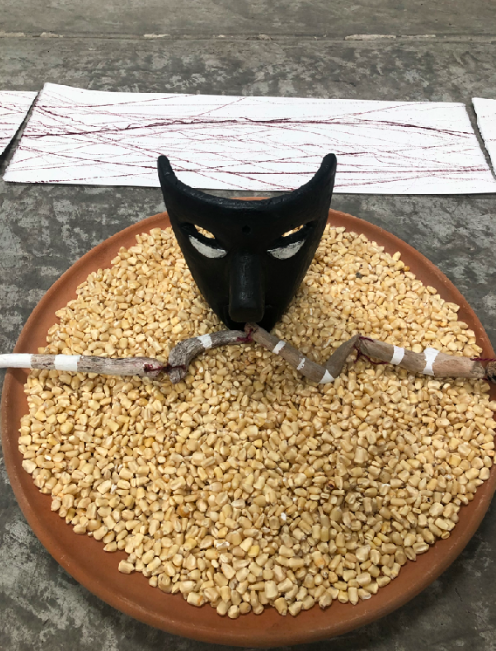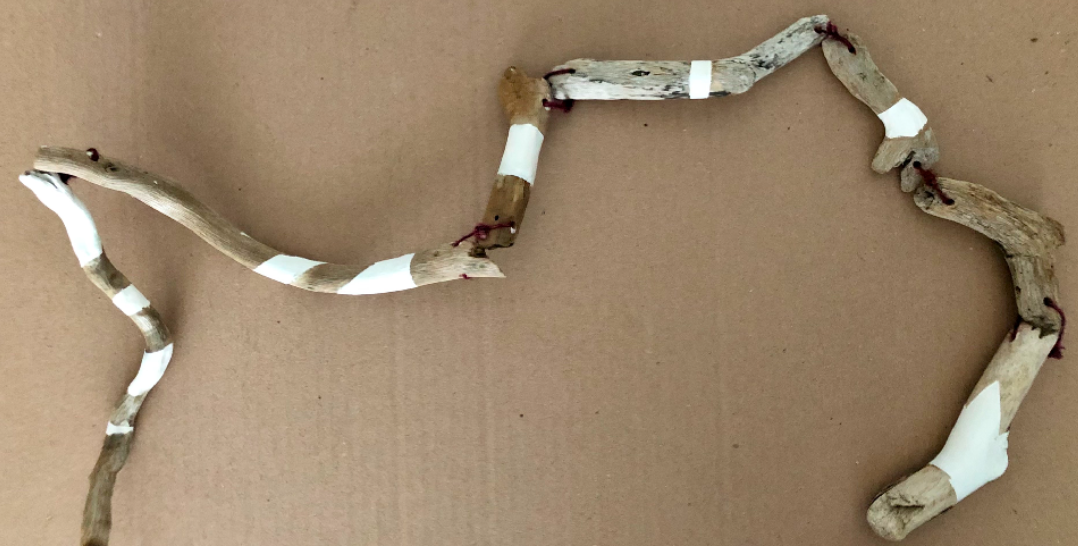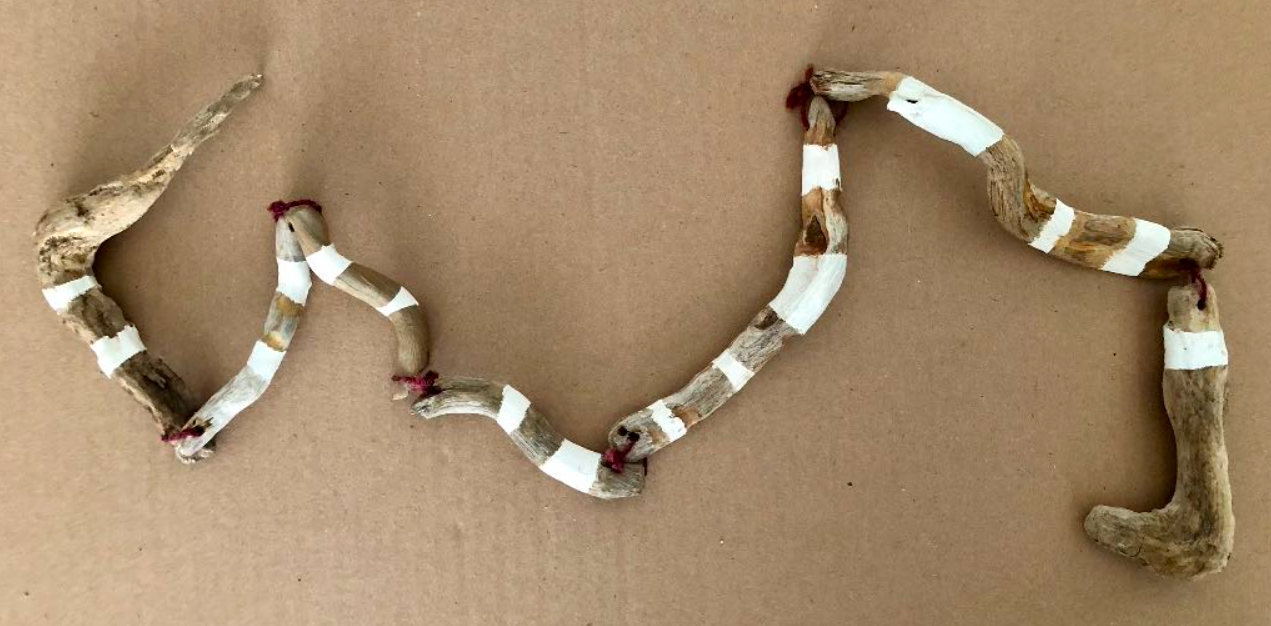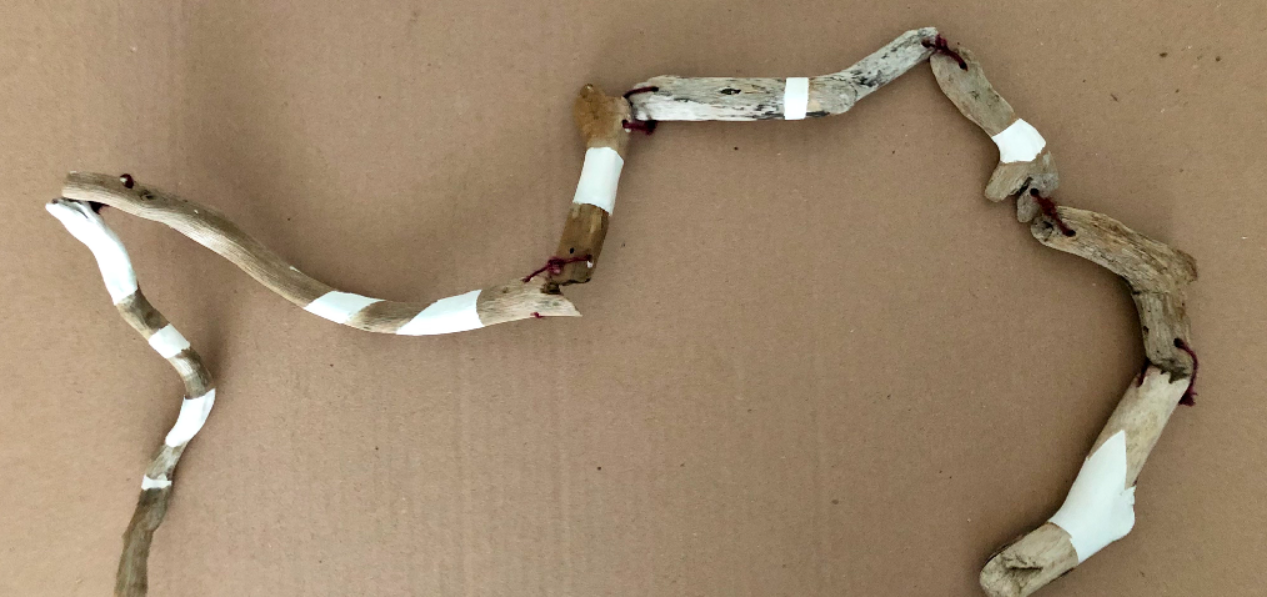
Cuerpos de Maíz (Corn Bodies)
Data Sheet
INSTALATION. 4 PAINTED WOODEN MASKS, 4 ARTICULATED SNAKES, 4 DRAWINGS, GROUND FURROW, COLORED CORN, ROOT CANES AND METALLIC BASES
DETALLES DEL PROYECTO
Installation of ritual objects and drawings, inspired by traditional agricultural ceremonies and festivals of pre-Hispanic origin, where dance is one of the most important propitiatory practices.
The human body in movement (the dance) is thus transformed into an offering.
On the one hand, the Danza de los Negritos, is a dance of Totonac origin that is danced in the mountainous area of the states of Veracruz, Puebla and Hidalgo.
According to legend, a young African slave was sent to work in the bush where he was bitten by a viper. His mother immediately ran to help him by performing a ritual with songs, dances and prayers that saved his life. The Totonacs imitated this rite that later became the Dance of Negritos.
One of the main characters of the dance, La Maringuilla represents the owner of all varieties of corn and the possessor of medicinal herbs (patliquilitl).
The representation of a viper and the participation of the Maringuilla represents lightning, rain and corn for the Totonacs. The symbolic death of this animal propitiates the arrival of the rains. Within Nahuatl mythology, it is associated with lightning, rain, attributes of the maintenance goddess Chikomecoatl.
The Maringuilla of the Danza de los Negritos represents the “mother of the serpent” and is assimilated to Chalchiutlicue, goddess of water. In this dance she represents the goddess of rain or the mother of thunder, so this dance, among the Totonacs, constitutes a fertility rite that symbolizes the arrival of the rains, the death and resurrection of the grain of corn.
This ritual is dedicated to tender corn and is carried out during the corn season, that is, between the second half of September and the first half of October.
On the other hand, the Danza de los Viejitos, from the Purépecha region, is characterized by the use of old people’s masks and canes. The men who perform in this dance are known as “Danzantes”. The four men in the Purepecha tradition represent fire, water, earth, and air.
Four would be the indicated number of dancers in the traditional ritual, since there are four colors of corn (red, yellow, white, and blue). The dancers ask for a good harvest, for communication with the spirits, and to learn about the past or predict the future.
The wooden cane with which they dance, also known as “mulita”, symbolizes the tarecua, which is a rustic staff used to pierce the earth and deposit the seeds in the milpa.
In several of the myths about the origin of corn we also find references to the number seven. The number seven means Site Flor, a number that in esoteric language means seed, which results in Chikomecoatl (seven serpent) being the name of corn.
In this installation we have four black masks that represent the four cardinal points and the four colors of corn. Four tree trunk vipers (each viper is fragmented into 7 trunks, joined by cochineal dyed jute). The four drawings represent the tracks of vipers on the ground.
In the central part we find a furrow and a sowing choreography represented by the root canes.

Cuerpos de Maíz (Corn Bodies). Detail

Cuerpos de Maíz (Corn bodies). Snake

Cuerpos de Maíz (Corn bodies). Snake

Cuerpos de Maíz (Corn bodies). Snake

Cuerpos de Maíz (Corn bodies). Snake
DETALLES DEL PROYECTO
DETALLES DEL PROYECTO
DETALLES DEL PROYECTO
DETALLES DEL PROYECTO
DETALLES DEL PROYECTO
DETALLES DEL PROYECTO